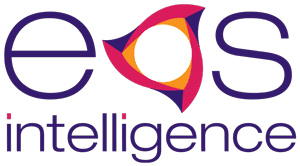Malaria, a treatable and preventable yet potentially fatal disease, is yesterday’s news in many developed nations. But this disease is still wreaking havoc in several developing countries, including the African continent. With the release of a new vaccine, many medical experts are examining whether this initiative will solve Africa’s malaria problem.
Africa’s crippling malaria burden has severe and lasting implications
Malaria is still a severe health issue in several countries, with the African region accounting for the lion’s share of the cases. WHO reported that in 2022, there were 249 million malaria cases, of which 94% were concentrated in Africa. Similarly, the number of deaths due to malaria was estimated to be 608,000, with 95% in Africa.
In the African region, about 78% of malaria-related deaths occurred in children under the age of five. Approximately half of malaria-related deaths were recorded in four African nations, namely Mozambique (4.2%), Uganda (5.1%), Nigeria (26.8%), and the Democratic Republic of the Congo (12.3%).
Malaria is mainly treated using artemisinin-based medicines. However, according to the WHO, partial artemisinin resistance is becoming a challenge in treating the disease in areas such as Tanzania, Rwanda, Uganda, and Eritrea. This has made developing a new solution to the malaria issue even more paramount.
New vaccines offer hope for eradicating malaria
In a significant effort to eradicate malaria from Africa, a new malaria vaccine has been introduced in the West African region in a first-ever routine vaccination program. Cameroon started the drive on January 22, 2024, by vaccinating children below the age of five with the RTS,S vaccine. Following the footsteps of Cameroon, many other countries have also opened their doors to this vaccine. Burkina Faso started the campaign on February 5. Similarly, Sierra Leone, Niger, and Liberia will also begin deploying the vaccine in late 2024.
UK-based pharmaceutical company GlaxoSmithKline (GSK) and PATH, a US-based NPO, developed the RTS,S vaccine after long clinical trials and tests. The initial version, which was developed in 1987 in GSK labs, underwent the Phase 3 trial between 2009 and 2014.
The RTS,S vaccine, commercially named Mosquirix, is designed to act against Plasmodium falciparum, a deadly malaria strain very common in the African continent, and prevent it from infecting the liver by targeting the circumsporozoite protein on the sporozoite surface. It was made by combining genes from the repeat (‘R’) and T-cell epitope (‘T’) of the pre-erythrocytic circumsporozoite protein (CSP) of the Plasmodium falciparum parasite with a hepatitis B virus surface antigen (‘S’). GSK researchers also used their expertise from developing the Energix-B vaccine against Hepatitis B to develop the RTS,S vaccine.
WHO has also pre-qualified another vaccine, R21/Matrix-M, developed by UK-based Oxford University and manufactured by Pune-based Serum Institute of India (SII), to prevent malaria. This vaccine is expected to be deployed in May or June 2024.
R21/Matrix-M functions similarly to RTS,S vaccine, but it is formulated to reduce anti-hepatitis B surface antigen antibody responses and raise anti-circumsporozoite protein antibody responses. Its initial focus was to induce a high degree of T-cell responses against pre-erythrocytic malaria antigens in the liver. But now, its focus also includes triggering high-level antibodies against the sporozoite stage of the parasite’s life cycle.
This vaccine also has the Matrix-M from US-based Novavax, a saponin-based adjuvant that boosts immune responses, enhances vaccine presentation in lymph nodes near the injection site, and increases vaccine durability and efficiency. This technology was successfully used in the COVID-19 vaccine produced by Novavax.
The new vaccines are effective in preventing malaria
Large-scale clinical trials have assessed the efficacy and safety of both vaccines. Also, in 2019, after the WHO accepted its advisory bodies’ counsel on malaria immunization, RTS,S was rolled out in a pilot program and closely observed within the initial Malaria Vaccine Implementation Programme (MVIP) in Malawi, Kenya, and Ghana. Around 2 million children were immunized during this drive. This helped experts assess the on-ground efficacy of the vaccine. A 2023 article published in Malaria Journal, a peer-reviewed open-access journal of BioMed Central, indicated that the pilot rollout of the vaccine demonstrated a roughly 30% reduction in the risk of developing severe malaria. R21/Matrix-M has a slightly higher efficacy. A 2022 study published in The Lancet, a peer-reviewed journal, indicated that R21/Matrix-M was 75% effective against both first and recurrent malaria cases following three vaccine doses over a 24-month follow-up period.
While both these vaccines are considered safe by experts, they have some side effects. In the case of the RTS,S vaccine, the incidence of serious adverse events (SAEs) and fatal SAEs was 24.2%–28.4% and 1.5%–2.5%, respectively, across all study groups, according to a 2019 article published in Human Vaccines & Immunotherapeutics, a peer-reviewed journal of Taylor & Francis. Also, 0.0%–0.3% of individuals self-reported experiencing SAEs as a result of vaccination. The common adverse effects reported in clinical studies were upper respiratory tract infections, pneumonia, and gastroenteritis.
In the case of the R21/Matrix-M vaccine, the common side effects reported in phase 3 trials included site pain (19%) and fever (47%). The phase 3 trial was conducted on around 4,800 children in Tanzania, Kenya, Mali, and Burkina Faso.
Some challenges await players willing to invest in the African vaccine landscape
Though the introduction of the new vaccines offers a glimmer of hope to eradicate malaria from African nations, several challenges are waiting for companies willing to invest in this sector.
The complex religious and social beliefs in Africa make vaccine acceptance difficult
One major bottleneck many players can face is the reluctance in African societies to accept the vaccines. This hesitancy is caused by numerous misconceptions and rumors spreading about both vaccines’ side effects, especially in rural areas. A similar issue happened in 2003 when five states in northern Nigeria refused the polio vaccine due to the fear that it rendered women sterile.
A senior immunization officer at Cameroon-based Value Health Africa said that conspiracies and myths regarding the malaria vaccines can be expected. In his opinion, understanding such dynamics in different communities and creating immunization drives accordingly will lead to a larger acceptance of the malaria vaccines.
Many African countries also lack the capability to track and record vaccine side effects, creating concerns about their safety and efficacy. This can also discourage people from receiving the shots.
Players can tackle this challenge by conducting awareness camps and education drives focusing on the positive effects of the vaccine and debunking the myths. Companies should partner with trusted community leaders, religious figures, and healthcare workers to address concerns directly. Also, developing culturally appropriate educational materials in local languages explaining the benefits and safety of vaccines can help build trust and encourage vaccine acceptance. Collaborations with international agencies such as WHO, UNICEF, and Gavi, the Vaccine Alliance, an international organization focused on improving vaccine access to children in poverty-stricken countries, can also increase the authority of these drives.
Infrastructural deficits in the African continent hinder vaccination storage and deployment
Vaccine storage and distribution are another bottleneck players can face. Many African countries face frequent power outages, poor road networks, and inadequate cold chain facilities, making it difficult to get vaccines and vaccinators to target communities. Lack of proper storage facilities can also severely hamper the potency of vaccines.
Also, neither of the malaria vaccines used in Africa are produced in the continent as of now. This adds to the transportation and logistics costs of the companies. Current market players are evaluating many strategies to reduce these costs to make immunization drives more profitable.
GSK, the producer of the RTS,S vaccine, is currently in talks with India-based manufacturer Bharat Biotech for technology transfer, owing to the country’s cost-effective vaccine production.
Similarly, SII is in talks with Nigeria and Ghana to produce the R21 vaccine locally. However, the lack of proper infrastructure and technical expertise makes it extremely difficult for the company to set up vaccine-producing plants in these countries. Currently, it is still profitable for players to mass produce malaria vaccines in other countries, such as India, and then transport them to Africa, even with the additional logistics costs.
Read our related Perspective:
Vaccines in Africa: Pursuit of Reducing Over-Dependence on Imports
Financial challenges are creating roadblocks to immunization drives
Funding is also an issue in vaccination drives. Substantial funding is typically needed for these programs. For example, according to a 2016 report published in Vaccine, a peer-reviewed medical journal published by Elsevier, the cost of the DTaP vaccine (diphtheria, tetanus, and pertussis) for a child in Africa can range from US$25 to US$45, without including other logistics costs and requirements. Also, in many African countries, the expenses of vaccination drives are typically paid for by outside donors and organizations. This can make the widescale rollout much more challenging.
EOS Perspective
The malaria vaccination drive is expected to dramatically change the way the African continent fights this deadly disease, especially with 30 countries expressing high interest in adopting the vaccine, according to the chief program officer at Gavi. Till now, the focus of companies and organizations such as WHO has been more on treating the disease, but with the release of the new vaccine, the focus has shifted towards preventing and eradicating the disease from the African continent.
With international organizations and NGOs pushing to expand the vaccination drives to cover the entire continent, the currently competing market players focusing on immunization are in for a huge profit. Players such as GSK, which started research on the vaccine in the 1980s, have years of research behind product development, placing them miles ahead of their competitors. Other interested and capable companies will have to put more effort into R&D to compete with these veteran players.
While only two vaccines have currently received WHO recommendation, several more candidates are in the pipeline, with many in their phase I-IV development. According to the WHO, 133 vaccines are currently under clinical development, and 38 out of them are in active status. An example is US-based biotechnology company Sanaria’s PfSPZ Vaccine, which proved to be easy to administer, well-tolerated, and safe in a small trial on Malian adults. Similarly, Germany-based BioNTech hopes to use its mRNA technology to create a malaria vaccine and launched the early-stage clinical trials in 2022.
Several competitive players now understand the investment potential in the malaria vaccine industry. Since 2002, 221 trials involving malaria vaccines have either been initiated or completed, according to the WHO. This means that competitive and able players who can make early investments in the market might become strong competitors in the near future.
Gavi has reported that, as of February 2024, just 18 million units of the RTS,S vaccine will be available to reach 12 nations through 2025. Though the actual vaccine requirement numbers are not yet known, since the continent is home to over 207 million children under the age of four, it can be safely assumed that the demand for effective vaccination will not decrease anytime soon.
Also, with the establishment of the African Medicines Agency (AMA) set up to create a uniform regulatory framework across the continent, it is likely to become easier for vaccine producers to enter the market, as the requirements, which currently vary from country to country, are expected to be more unified. Currently, 37 out of 55 African countries have ratified or signed the AMA Treaty, and this is likely to increase soon.
Studies are now being initiated to create an effective single-dose vaccine. A preprint of a study by European researchers from Germany, The Netherlands, and Switzerland jointly researching the single-dose vaccine and its effectiveness was released in bioRxiv, an open-access preprint repository owned by the Cold Spring Harbor Laboratory. However, this study is yet to be evaluated by the medical community.
All in all, joint efforts from international organizations such as WHO and pharmaceutical companies are expected to not only decrease the disease burden but also serve as a foundation for future research into more potent and long-lasting vaccines.



